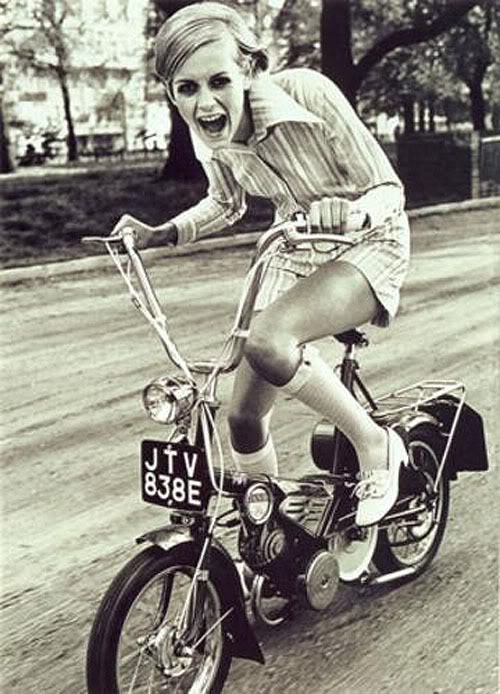British Raleigh Mopeds: A Two-Wheeled Parade of Renown
The article discusses the journey of Raleigh's cyclemotors and mopeds, from their origins as a means of affordable and practical transportation to becoming cultural icons that shaped British cycling history. Despite facing challenges such as economic flux, shifting consumer preferences, and regulatory hurdles, Raleigh's two-wheelers left an impenetrable legacy in the thread of British cycling history, becoming much sought-after collectibles today.
MOPEDSMOPED CULTURE RALEIGH UNITED KINGDOM TWO STROKE1960'S
11/2/20233 min read


From Cobblestones to Culture: The Journey of Raleigh Mopeds
Historical Context
Picture a time in British history when the echoes of World War II were still reverberating through the streets, and Britons were seeking solace in the joy of simple freedoms. As the nation rebuilt itself, there was a mounting demand for a mode of transport that was affordable and practical. And this is where cycling came to the fore, offering the masses a means to reclaim their freedom, to seek employment opportunities, and simply to enjoy life's pleasures. The Raleigh brand capitalized on this renewed interest, and its cyclemotors and mopeds emerged as front-runners in this race, ushering in a new era of two-wheeled transportation.
Brand Origins and Evolution
From humble beginnings as a small bicycle workshop, the Raleigh brand emerged as an iconic symbol of Britain's cycling history. Its founders, steeped in the entrepreneurial spirit, were fuelled by a vision to deliver practical yet compelling solutions for the common man's commuting needs. Over the years, Raleigh transformed from a local fixture to an international sensation. Its products, admired for their quality and performance, were pivotal in defining the company's illustrious legacy in the global cycling community.
Cyclemotors and Moped Models
Raleigh's adventure into the world of cyclemotors and mopeds felicitously coincided with Britain's burgeoning love for two-wheelers. The factory floors of Raleigh began to churn out models that were not just means of transport; they were dreams on two wheels. From the practical and popular RM4 to the innovative 'Runabout' RM6, Raleigh's two-wheelers were a celebration of craftsmanship, functionality, and aesthetics. Each model bore the signature of Raleigh's commitment to innovation and quality.
Production and Manufacturing
Raleigh's investment in its manufacturing processes and facilities was key to its product success. The company built a reputation for meticulous design and precise execution, with production facilities optimized to assemble cyclemotors and mopeds with the highest attention to detail. From the selection of raw materials to the assembly and quality control processes, every aspect of production reinforced Raleigh’s commitment to excellence, cementing its unfaltering stature in the competitive landscape of two-wheelers.
Market Impact and Popularity
Raleigh's cyclemotors and mopeds quickly gained a firm foothold in the British market, earning the admiration and trust of countless riders. Beyond Britain, Raleigh became a celebrated name on the international stage, with its products being exported to many countries. The profound impact of Raleigh's two-wheelers on the market was not limited to numbers and sales; they shaped the cycling culture and moved the needle in the race of mass transportation. Raleigh's two-wheelers were not just means of conveyance; they were the lifelines that connected communities, epitomizing the spirit of British resilience and innovation.
Cultural Significance
Raleigh's cyclemotors and mopeds were more than just transportation vehicles; they were cultural icons. They carried people to work, to stores, on dates, and thus became an integral part of British daily life. Their influence permeated deeper, impacting fashion trends, and were a common sight in media and advertising. A Raleigh moped wasn’t just a two-wheeler; it was a statement, a style, a way of life. It stirred a wave of subcultures and communities, further rooting Raleigh's cultural impact.
Challenges and Decline
Like any journey, Raleigh's voyage in the world of cyclemotors and mopeds was strewn with challenges. Economic flux, shifting consumer preferences, regulatory hurdles, and a proliferating circle of competitors threw curveballs at Raleigh's trajectory. Despite their innovative offerings and widespread popularity, Raleigh's cyclemotors and mopeds began to face a decline. Whether it was the increasing preference for motor vehicles or changes in societal lifestyle, several stones wedged themselves in the smooth path of Raleigh's two-wheeler production, eventually steering it towards decline.
Legacy and Collectibility
Despite halting production, Raleigh's cyclemotors and mopeds have left an impenetrable legacy in the thread of British cycling history. These vintage two-wheelers, with antiquity adding to their appeal, are much sought-after collectibles today. They are lovingly restored and exhibited, their retro charm captivating onlookers. Numerous enthusiast communities, both online and offline, continue to celebrate the Raleigh legacy, trading parts, restoring vintage models, and sharing love-stories of these delightful machines. It's as if time has added a sheen to Raleigh's two-wheelers, etching them forever in the annals of cycling history.
